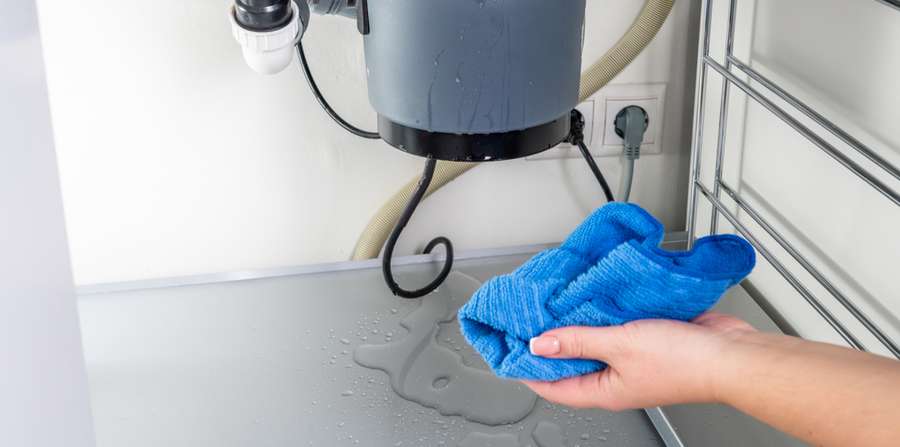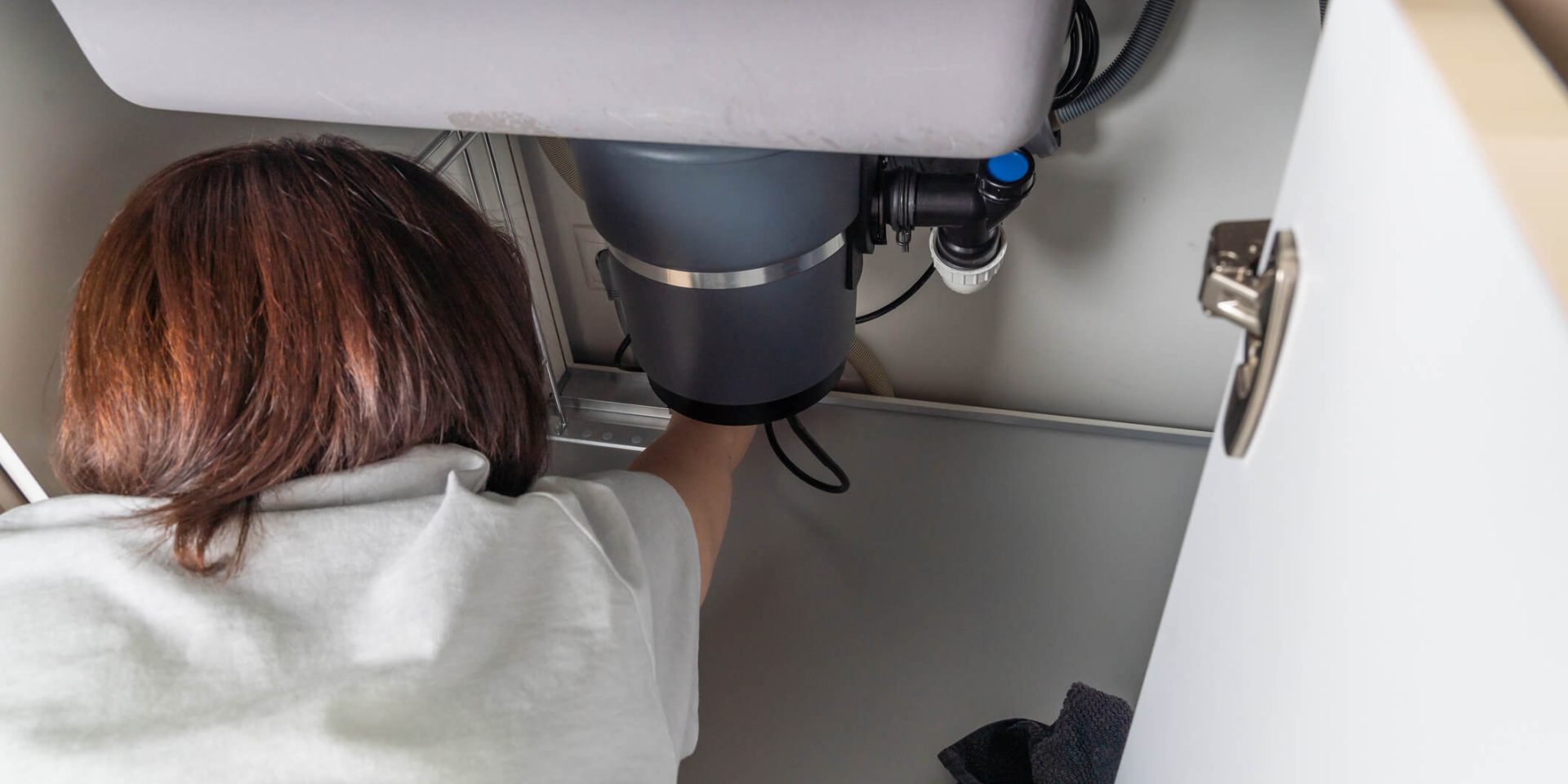Leading Tips for Fixing a Leaking Waste Disposal Unit
Leading Tips for Fixing a Leaking Waste Disposal Unit
Blog Article
Listed here in the next paragraph you can discover lots of outstanding expertise when it comes to Why Is My Garbage Disposal Leaking From the Bottom?.

Waste disposal unit are necessary cooking area devices that assist in taking care of food waste successfully. However, a dripping garbage disposal can be a discouraging and messy problem to take care of. Fortunately, numerous leakages can be fixed conveniently with a couple of basic steps. In this short article, we will discuss exactly how to repair a leaking garbage disposal properly.
Introduction
Garbage disposals are set up under kitchen area sinks and are created to shred food waste right into smaller pieces, permitting it to pass through the plumbing system easily. While these tools are typically reputable, leakages can take place gradually as a result of wear and tear, loose links, or damages to the unit.
Usual Reasons For Leaks in Rubbish Disposals
Worn Seals and Gaskets
Seals and gaskets play an important duty in avoiding water from dripping out of the waste disposal unit. Over time, these parts can degrade, leading to leakages around the disposal unit.
Loose Links
The connections between the garbage disposal and the plumbing system can end up being loosened with time, triggering water to leak out during operation.
Fractures or Holes in the Disposal Unit
Physical damage to the waste disposal unit, such as splits or openings in the real estate, can additionally lead to leakages.
Determining the Source of the Leakage
Before trying to repair a dripping garbage disposal, it is essential to determine the resource of the leakage. This can commonly be done through aesthetic assessment or by carrying out easy tests.
Visual Examination
Examine the waste disposal unit unit thoroughly for any kind of indications of water leakage. Pay attention to areas around seals, gaskets, and connection factors.
Evaluating for Leakages
One method to evaluate for leakages is by running water with the disposal system and looking for any visible signs of leak.
Devices and Products Needed for Fixing a Leaking Garbage Disposal
Prior to starting the fixing process, collect the required devices and products, including a screwdriver, adjustable wrench, plumbing's putty, replacement seals or gaskets, and epoxy or patching material for repairing fractures or holes.
Step-by-Step Guide to Taking Care Of a Dripping Garbage Disposal
Switch off the Power
Prior to attempting any type of repair services, make sure that the power to the waste disposal unit system is turned off to avoid the risk of electrical shock.
Find the Leakage
Identify the specific location of the leak and identify the cause.
Tighten Connections
Use a wrench to tighten up any kind of loose links between the disposal system and the plumbing system.
Change Seals or Gaskets
If the leak results from used seals or gaskets, eliminate the old elements and change them with brand-new ones.
Patching Splits or Holes
For cracks or openings in the disposal system, use epoxy or an ideal patching product to seal the broken area.
Checking the Garbage Disposal After Repair Work
As soon as the repair work is complete, check the garbage disposal by running water with it to make sure that the leak has actually been settled.
Preventive Upkeep Tips to Avoid Future Leaks
To avoid future leakages, it is vital to execute routine maintenance on your garbage disposal. This includes keeping it tidy, avoiding putting non-food items or difficult things down the disposal, and periodically checking for leaks or various other concerns.
Final thought
In conclusion, fixing a dripping garbage disposal is a relatively straightforward procedure that can be completed with fundamental tools and products. By complying with the steps laid out in this post and exercising preventative maintenance, you can keep your garbage disposal in good working problem and avoid pricey repair work in the future.
What to Do About a Leaking Garbage Disposal
A leaking garbage disposal often goes unnoticed until you confront a sopping cabinet, a foul-smelling puddle, or an audible drip-drip-drip from the unit. The fix can be frustrating, too, because the leak can stem from a number of components in the system. Fortunately, with a little sleuthing, you can zero in on the leak and—depending on the exact location—stop the icky oozing and repair the component that caused it. Worst case scenario, if it turns out that the garbage disposal must be replaced, installing a new one is a reasonable do-it-yourself task for those with basic plumbing skills. Read on to keep the cash you’d otherwise hand over to a pro.
Prepare to find the leak
Prior to testing the garbage disposal for leaks, unplug it at the wall outlet and turn off the power from the breaker box to prevent electrical shock. Then insert a watertight sink stopper into your sink drain and wipe the unit dry with a clean cloth. In any handy container, mix a few drops of food coloring into a few cups of water, and pour the dyed water onto the sink stopper to help you locate the leak.
Investigate the source
the top, where the disposal meets the sink drain the side, where the dishwasher hose or main drain pipe connects to the disposal or the bottom of the unit Inspect each of these locations while gliding a light-colored rag over the unit; the dyed water will readily show on the rag and reveal the location of the leak. If a leak isn’t immediately apparent, remove the sink stopper and pour a few more cups of dyed water down the sink drain, then check for leaks again. Leaks near the top of the unit are more likely to show themselves while the sink is plugged, while side and bottom leaks are more noticeable while the sink is unplugged.
The metal sink flange that sits directly inside the sink drain is typically sealed around the top with plumber’s putty (a clay-like sealant) and then secured from under the sink with bolts. If the plumber’s putty deteriorates, or the bolts loosen, the flange can no longer form a watertight seal between the sink drain and the disposal—which could cause a leak at the top of the unit.
To reseal the leaky flange, you must first detach the garbage disposal. Start by loosening the screws securing the main drain pipe to the disposal, then loosen the screws in the metal clamp securing the dishwasher hose to the disposal and detach the drain pipe and dishwasher hose from the disposal. Loosen the screws in the mounting ring that connects the disposal to the metal mounting assembly beneath the sink, then pull down the disposal and carefully set it on a clean, dry surface. Loosen the bolts in the mounting assembly with a wrench, then pull down the mounting assembly and set it near the disposal.

As a reader on Why Is , I think sharing that piece of content was essential. So long as you enjoyed reading our blog posting plz don't forget to share it. Thanks so much for taking the time to read it.
Schedule An Appointment Report this page